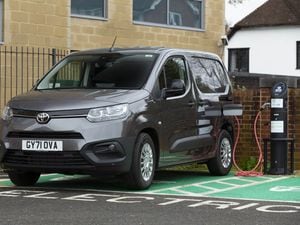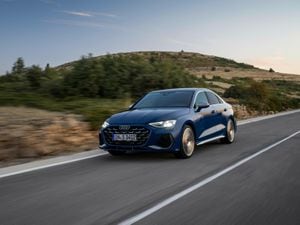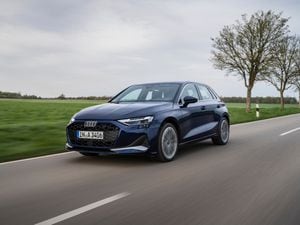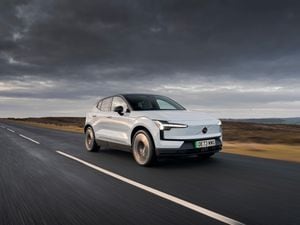First Drive: Is the Toyota Proace City Electric the ideal last-mile delivery van?
We’ve been testing the new electric Proace to see if van drivers should consider the switch to electric.

What is it?

In the world of passenger cars, electric vehicles are becoming more and more normal. However, it’s a similar story in commercial vehicles, driven by two key reasons. The first is that with a boom in online shopping, ‘last-mile’ deliveries are increasing. And on top of this, these deliveries are made on a large scale in cities where polluting vehicles are increasingly facing extra charges.
Therefore the market for vans that don’t cost too much to run and don’t incur low emission zone charging is only set to increase. That’s where electric vans come in, and with these drivers typically not driving too many miles during a work day, there are fewer concerns about needing to top up the batteries.
One such example of a vehicle targeting this market is the Toyota Proace City Electric, which we’ve been testing on UK roads in long wheelbase form.
What’s new?

This is the City model, which joins the Proace Electric medium duty van that was launched earlier this year. It has an electric motor on the front axle driving the front wheels and a battery pack that doesn’t intrude into the cargo space at all.
The gear shifter has been swapped for a drive selector with a switch that can ramp up the regenerative braking, which can maximise range in urban locations. It promises ultra-low running costs in the long-term thanks to its electric powertrain, which makes it extra appealing to companies, as well as the 10-year warranty.
What’s under the bonnet?

Power comes from a single electric motor that provides front-wheel drive. It makes 134bhp and 260Nm of torque in its power setting, 108bhp/210Nm in normal and 81bhp/180Nm in Eco. The power output is sprightly but, even in its more powerful mode, lacks that instantaneous punch we’ve come to expect from EVs, which actually suits its commercial character well.
The battery pack is sat beneath the load area but doesn’t intrude on the space at all, which means the Electric model gets the same 800kg payload and 750kg towing capacity. The battery has a 50kWh capacity that provides an official range of 168 miles, and can be charged at up to 100kW, with an 80 per cent charge possible in 30 minutes.
We were slightly disappointed by the battery usage, though. With an empty van we used 95 miles of range on a 50-mile route. However, in its defence this wasn’t predominantly inner-city in the way this van would likely be used, while the temperatures struggled to get out of single digits.
What’s it like to drive?

The driving experience was hugely impressive. Modern vans are close to the refinement of cars and the Proace City Electric is no different. The seat isn’t particularly supportive but it’s otherwise comfortable, and when pulling away the electric motors provide a satisfying surge.
Even more impressively there are no squeaks and rattles from the body that might normally be hidden by a rumbling diesel engine, while road noise isn’t too intrusive either.
Out on the road it’s comfortable thanks to its soft suspension, but manages to restrain too much body roll once at higher speeds. But it’s in towns where the Proace City Electric feels most at home, soaking up bumps and sprinting through traffic with ease.
How does it look?

The Toyota Proace Electric van is one of the smarter-looking vans on the market, marrying a good combination of sleek lines and more robust bodywork. The front end in particular is a highlight, with the full-width grille merging into rectangular headlights, while the lower bumper has a chunky appearance that should make it ideal for the rough and tumble of city life.
At the rear it’s typical van fare, with the double doors and vertical tail lights, but the roof has a subtly rounded off edge that gives it a smarter appearance than some rivals.
What’s it like inside?

The interior trim quality is impressive considering it’s largely made up of hard-wearing plastics, while the central infotainment screen adds a welcome touch of modern technology. Ahead of the driver is a digital dials display that’s unique to the Electric model and displays all the relevant information, such as speed and battery range.
The passenger bench folds down which increases the load space to 4.4m3. The maximum payload is 800kg on the standard wheelbase version (L1) and 750kg for the long wheelbase (L2), while that 750kg towing capacity applies to both versions. This load area is easily accessed through a sliding door on each side.
What’s the spec like?

The Proace City Electric is only available in Icon trim, which is the model’s best-selling specification. This includes an eight-inch infotainment display with Apple CarPlay and Android Auto, front and rear parking sensors with a reversing camera, automatic wipers, air conditioning, cruise control and automatic headlights. You can then choose between a 7kW on-board charger or 11kW.
All versions are eligible for the £3,000 plug-in car grant, meaning the commercial on the road price is £24,588 for the L1 with a 7kW charger or £24,713 with the 11kW charger. For the L2 versions, prices start at £25,213 and £25,338 respectively.
Verdict

We’ve been mighty impressed by the driving experience of the Toyota Proace Electric van. It’s comfortable, soaking up bumps well while also being easy to drive – particularly in the urban environments it will spend most of its time.
We do have some concerns over battery range, particularly once the van is fully loaded, so if you’re considering one it’s definitely worth studying your daily mileage and/or charging possibilities.
If this is no concern, though, this is an excellent electric van that should cost peanuts to run in the long-term.





